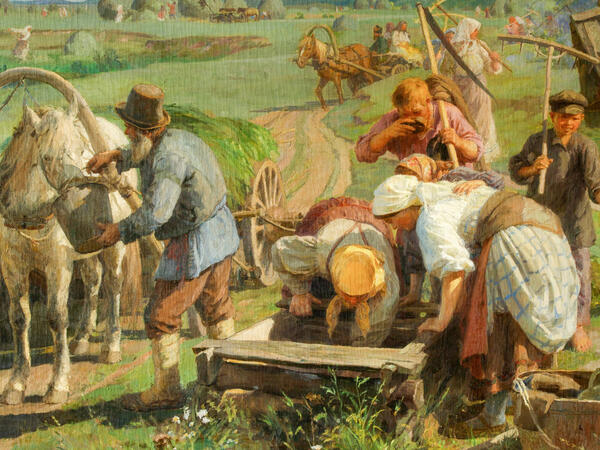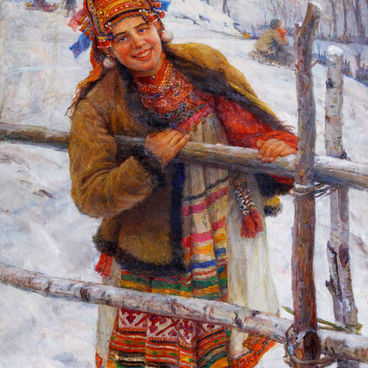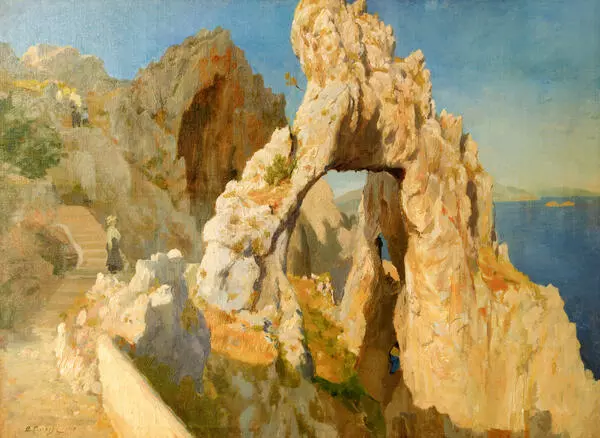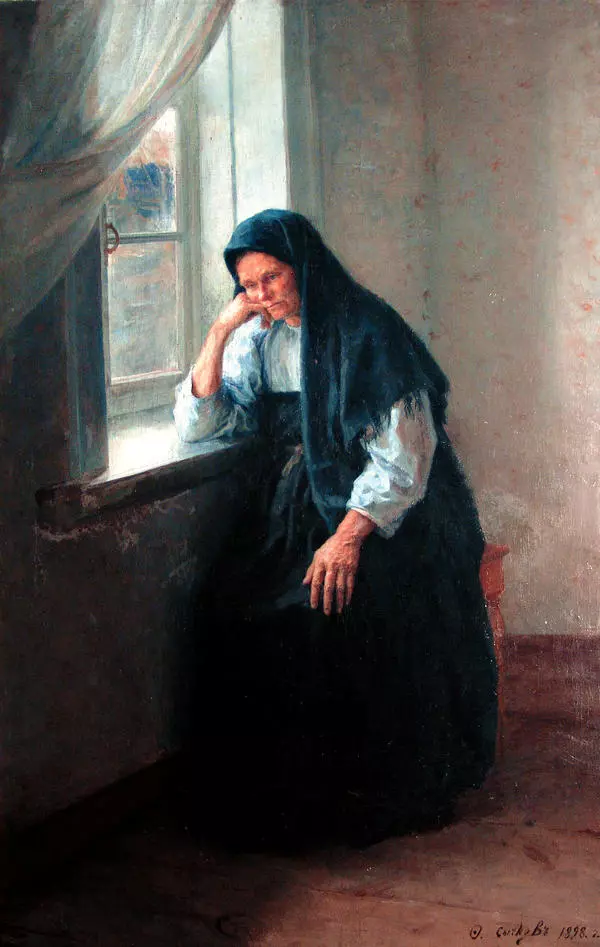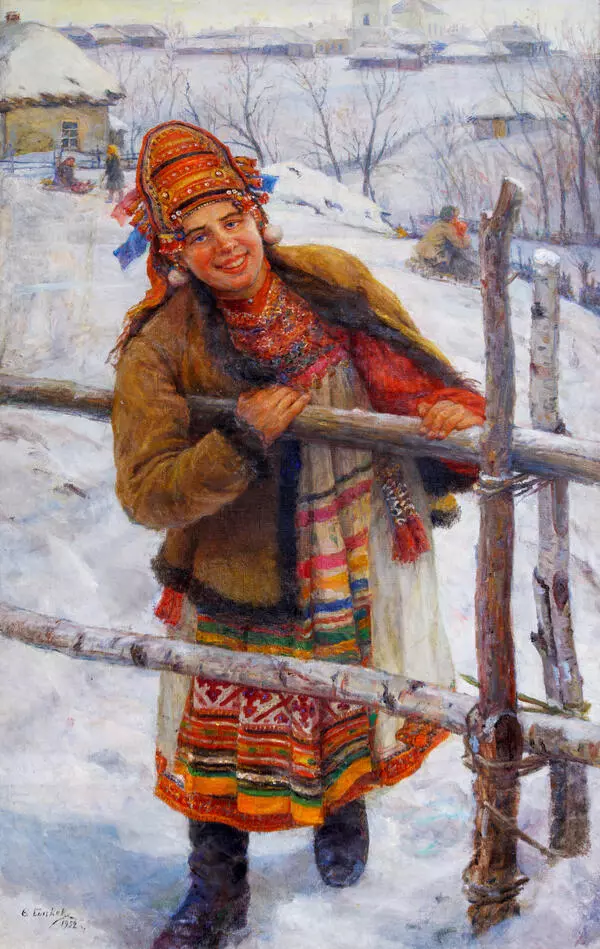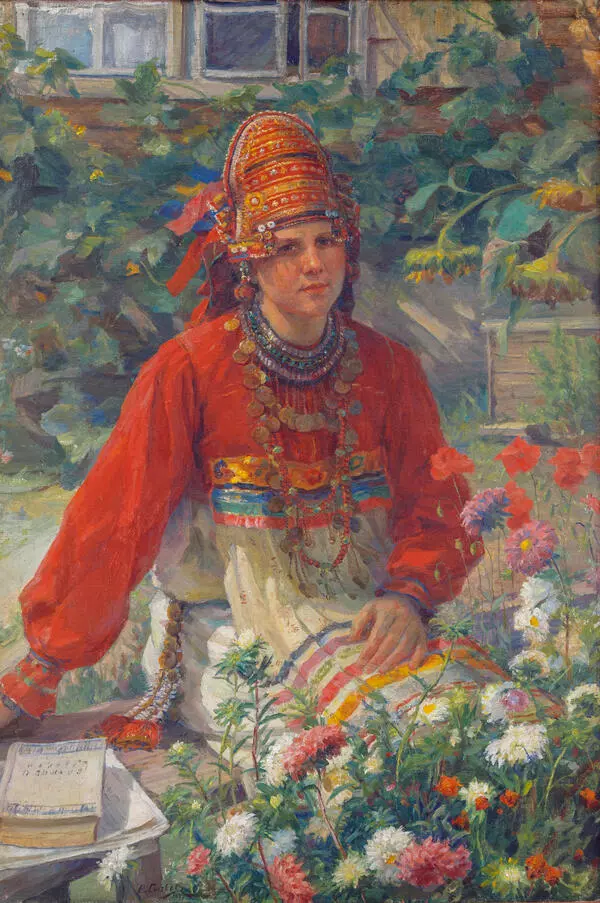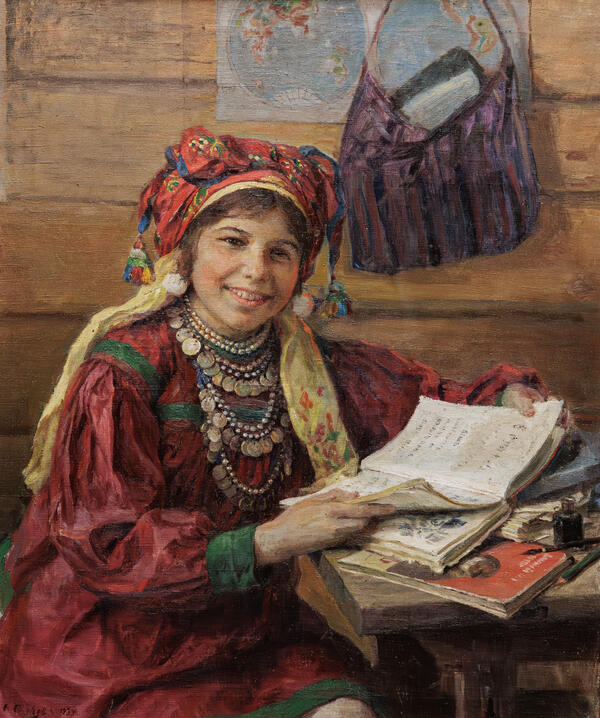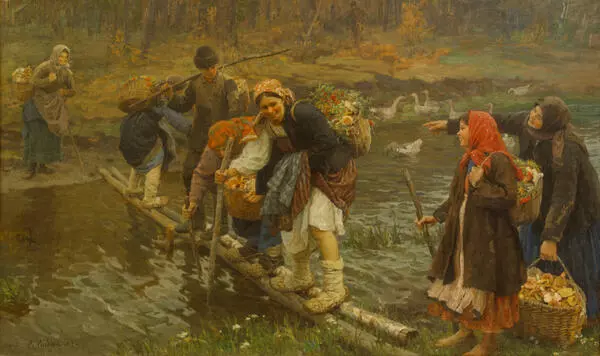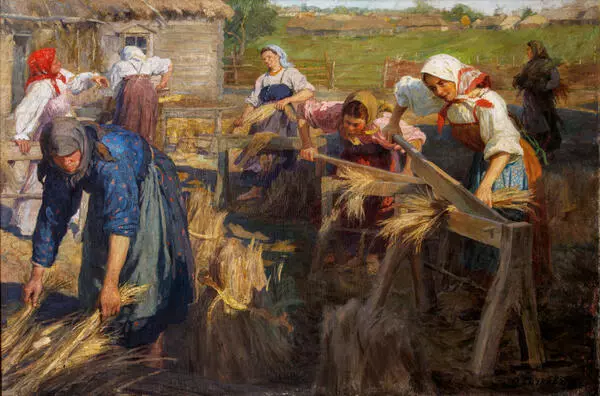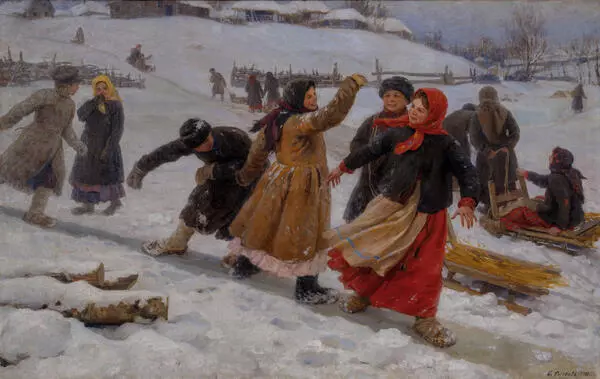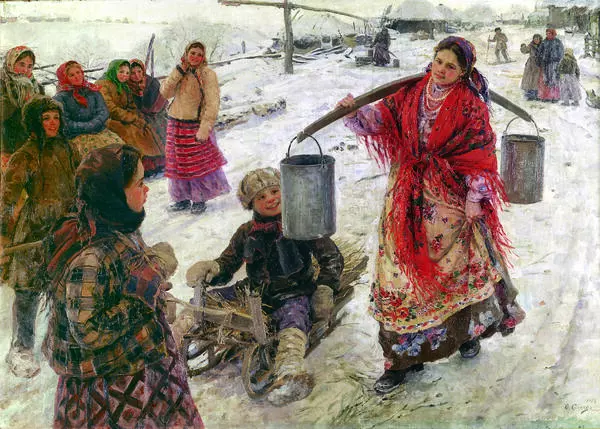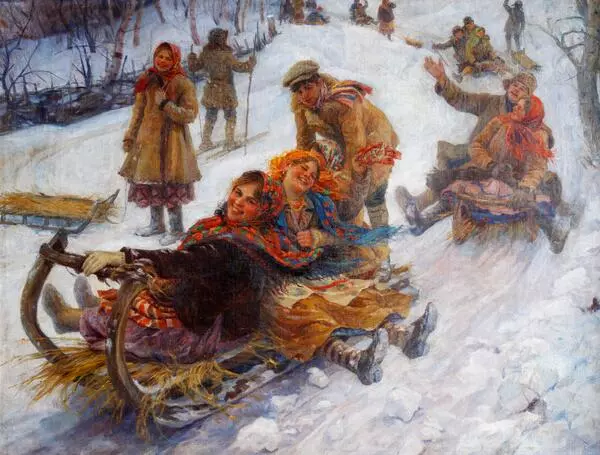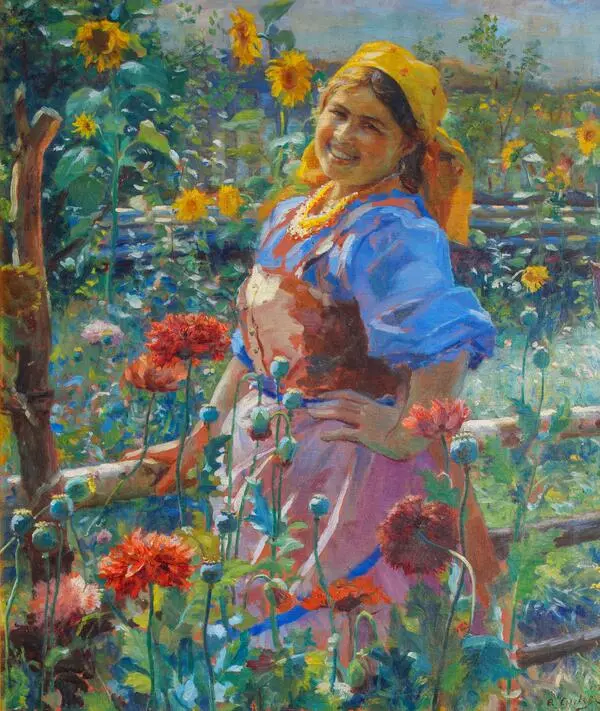In this painting, Fedot Sychkov depicted the peasants returning after haying on a scorching-hot summer day. In the foreground, a group of peasants stopped near a roadside well. The haymaker in a sun-bleached shirt greedily drinks water from a cup. A white-bearded old man in patched clothes and lapti (traditional Russian shoes made of straw) gives water to the horse. The women bend over the well, and the boy who harvested hay together with the adults, hurries towards them. There is a bonfire nearby — its pungent blue-grey smoke curls across the field. The cauldron hangs on the tripod, the peasants who have come to earn money fuss nearby.
Fedot Sychkov depicted this scene with such ease that it looks real and true-to-life. The artist painted vast expanses of fields with haystacks that stretch to the horizon, revealing only a streak of blue sky. This composition emphasized the importance of the land in the countryside. The artist who grew up among rural landscapes tended to depict people close to nature: the individual characters of peasants were revealed especially fully through the communication with nature.
Fedot Sychkov’s artistic approach had the same sources of inspiration. He painted pictures en plein air. The French ‘en plein air’ literally means ‘in the open air’, and describes the artist’s work outdoors. Artists work freely this style of painting, applying dabs of paint that remain not smoothed. Painters fill the canvases with the dynamics of light and air. These features are characteristic of Fedot Sychkov’s style.
Detailed and honest story telling is another peculiarity of his artistic approach. The artist did not exaggerate, overemphasize or complicate his paintings. He painted only what he really knew and loved. That is why the vivid depictions of peasants, animals, and minute details are so realistic.
The painting ‘Returning After Haying’ was exhibited in 1913 in St. Petersburg at the exhibition of the Society named after A. I. Kuindzhi, and was awarded the First Prize.
Fedot Sychkov depicted this scene with such ease that it looks real and true-to-life. The artist painted vast expanses of fields with haystacks that stretch to the horizon, revealing only a streak of blue sky. This composition emphasized the importance of the land in the countryside. The artist who grew up among rural landscapes tended to depict people close to nature: the individual characters of peasants were revealed especially fully through the communication with nature.
Fedot Sychkov’s artistic approach had the same sources of inspiration. He painted pictures en plein air. The French ‘en plein air’ literally means ‘in the open air’, and describes the artist’s work outdoors. Artists work freely this style of painting, applying dabs of paint that remain not smoothed. Painters fill the canvases with the dynamics of light and air. These features are characteristic of Fedot Sychkov’s style.
Detailed and honest story telling is another peculiarity of his artistic approach. The artist did not exaggerate, overemphasize or complicate his paintings. He painted only what he really knew and loved. That is why the vivid depictions of peasants, animals, and minute details are so realistic.
The painting ‘Returning After Haying’ was exhibited in 1913 in St. Petersburg at the exhibition of the Society named after A. I. Kuindzhi, and was awarded the First Prize.

